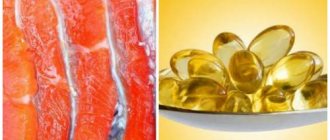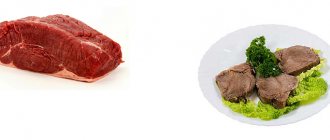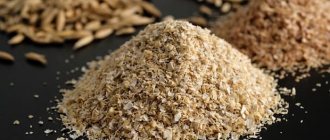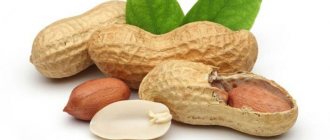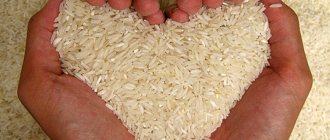Forum of residents of the Naberezhny village, Dolgoprudny
Calorie content of tangerine in 100 grams and in 1 piece One large tangerine weighs about 130-140 grams.
A tangerine without peel weighs 100 grams, that is, one kilogram of tangerines will contain about 280 grams or 28-30% zest. Tangerines calorie content for weight loss - aktivned.ru Calorie content of tangerines - 54 kcal. The tangerine in the picture with the peel weighs 90 g, without the peel - 80. This is an average, or even slightly larger than average tangerine, with a dense thin peel, the country of origin, according to the sticker, is Morocco.
Made from orange and orange peel. Discussion on LiveInt How many calories are in a tangerine? For most of us, residents of non-tangerine areas, all orange, flattened citrus fruits. Due to how many calories there are in tangerine, many strive to lose weight on this product.
How many calories are in a tangerine? Mandarin. See with your own eyes how much one tangerine weighs. A tangerine without peel weighs 100 grams, that is, one kilogram of tangerines will contain about 280 grams or 28-30% zest.
All the most interesting things about tangerines Vestnik K How many calories are in a tangerine? If we take the average calorie value of the product, then for tangerines it will be 53 kcal per 100 g. One large fruit weighs approximately 120-140 grams. In this case, about 30% of the weight comes from the peel.
How many tangerines can a skinny person eat? 2 grams of various dietary fibers; a small glass of water. You can get a very tasty juice from tangerines, which will be more Similar posts: How many calories are in an orange. Calorie content of fig peach and recipe for compote, porridge with it.
Currently watching
how many grams are in a tablespoon of boiled rice, how many grams are in a glass, how many grams are in a tablespoon, how many grams are in a tablespoon table
Are tangerines and oranges foods with negative calories?
Negative calorie foods are very important for those who are losing weight and counting calories. Understanding negative calories is very simple.
- For example, 100 grams of green salad have only 33 kcal.
- When you eat 100 grams of salad, your body spends approximately 150 kcal on digesting them.
- This process includes chewing, saliva production, enzyme production, digestion, and so on.
- Consequently, 135-137 calories are taken not from the product, but from the body.
- The list of foods with negative calorie content includes oranges and tangerines.
In addition, the dietary fiber content in them is so high that the digestion process will be simplified and accelerated.
Calorie content of tangerine
People who monitor the caloric content of their diet, the intake of proteins, carbohydrates and fats into the body are interested in the energy value of all products. Therefore, they need to know how many calories are in a tangerine (1 piece). Based on the data obtained, you can formulate a diet.
Lovers of homemade sweets can appreciate the jam made from tangerines, but jam made from these fruits is no less tasty. You can make these popular delicacies yourself at home.
The calorie content of jam will depend on the amount of sugar that was added to it during cooking. If you make jam with sourness, adding only 0.5-0.6 kg of sugar per 1 kg of fruit, the resulting product will have a calorie content of 150 kcal per 100 g.
But many people prefer to make a sweeter delicacy instead of sour jam with a characteristic tangerine aroma. If you add 1-1.2 kg of sugar per 1 kg of fruit, the calorie content will increase to almost 300 kcal.
The calorie content of jam does not differ significantly from the nutritional value of jam, since the composition of these sweets is similar. To make jam, in addition to tangerine pulp and sugar, pectin is required. It gives the necessary thickness to the finished product.
To make jam, tangerines should be divided into slices; some recommend cutting each of them into several parts. You will also have to remove all the white veins.
Prepare tangerine jam as follows. The prepared fruit pulp should be poured into boiling water (250 ml is enough for 1 kg of tangerines) and boiled for 15 minutes over low heat. After this, you need to add sugar and boil the mixture for another 20 minutes. You can improve the taste of the jam by first grating orange zest into a pan of water.
To calculate the energy value of a delicacy, you will need information about how many calories are in 1 tangerine, sugar and orange zest, and how much of each product was used in the preparation process. When making jam from 1 kg of tangerines, 600 g of sugar and 1 tsp. orange zest, the resulting product will contain 150.5 kilocalories per 100 g. The calculation takes into account that 100 g of tangerines contains 33 kcal.
To prepare tangerine jam, you need to take 1 kg of fruit and 0.5 kg of sugar. For this amount of food you should add 10 g of pectin.
The delicacy is prepared according to this recipe. First, peel the tangerines and grind them in a blender. After this, the fruits are covered with sugar and boiled for 10 minutes; At the end, add pectin and cook the mixture for another 2 minutes. After cooking is complete, you should immediately pour the prepared jam into jars and preserve them.
When creating jam according to the specified recipe, the resulting product will have a calorie content of 156 kcal. 100 g of jam will contain about 38.6 g of carbohydrates. Therefore, people who are watching their weight or suffering from diabetes should avoid such treats.
People who monitor the caloric content of their diet, the intake of proteins, carbohydrates and fats into the body are interested in the energy value of all products. Therefore, they need to know how many calories are in a tangerine (1 piece). Based on the data obtained, you can formulate a diet.
Do oranges and tangerines speed up metabolism when losing weight?
Metabolism is a series of biological and chemical reactions of the body that are necessary to maintain the vital functions of the body and release energy). Oranges and tangerines are good for improving metabolism because they contain not only a large amount of dietary fiber, but also fruit acids.
What is the mass of one medium tangerine?
I myself adore tangerines and we just buy kilos of them. It sounds scary, but in reality there are not so many of them per 1 kg and it turns out: the smallest pieces are 12; medium 10, and large 8 pieces. Plus minus - tangerines grow differently. It turns out that the weight of one medium tangerine is 50 grams. If you peel the zest, then all programs for counting calories also give 50 grams per tangerine - I constantly test such counters - it’s been verified.
Depending on the variety and type of tangerines, their weight also varies.
If you believe the World Wide Web, the smallest tangerines are Honey tangerines, the weight of the fruits together with the peel, as a rule, does not exceed 25 - 30 g.
The most commonly sold Abkhazian and Turkish citrus fruits weigh about 70 - 90 g.

Information on the Internet about the maximum weight of the fruits of this delicious and healing fruit is very contradictory, but it is known for sure that these are the so-called noble tangerines with a mass approximately equal to 135 - 150 g.

Thus, the average mass of a tangerine will be - (25 + 70 + 135) / 3 = 76 grams.
The weight of one tangerine directly depends on its size, there are small tangerines and they will weigh no more than 40 grams in the peel, but there are huge tangerines and their weight can reach up to 150 grams, and maybe even 200 grams. I recently bought these) Now I have medium-sized tangerines in stock and I have an electronic kitchen scale that shows the weight with an accuracy of 0.1 grams. In order not to be unfounded and not to write here about my assumptions, I went and weighed 3 tangerines and the following turned out: unpeeled ones weigh 78 g, 86 g and 100 g, peeled ones weigh 51 g, 60 g, 70 g, respectively. Based on the information provided, we can conclude that a kilogram contains 10-13 medium-sized tangerines.
People who monitor the caloric content of their diet, the intake of proteins, carbohydrates and fats into the body are interested in the energy value of all products. Therefore, they need to know how many calories are in a tangerine (1 piece). Based on the data obtained, you can formulate a diet.
I eat tangerines, I’m losing weight and my weight is normal!
Everyone knows the benefits of tangerines and many people eat them. Now there is a reason to eat even more of them! It turns out that tangerines prevent obesity, which means your weight will be normal. And you can even lose weight. How to eat tangerines correctly, who can and who can’t, what are the health benefits of these citrus fruits? You'll find out.
When we say “tangerine”, an immediate association with the New Year arises. The bright color, juicy and sweet pulp of this fruit will not leave anyone indifferent. Now you can maintain your weight with the help of citrus fruits, namely tangerines! It is enough to eat them regularly.
Important! Eating tangerines in large quantities can cause an allergic reaction. If necessary, consult a specialist.
Today there are many interesting recipes for preparing various fruit salads that contain tangerines. Almost all such salads allow you to lose weight. But even in their usual form they are very tasty!
Health benefits and harms of tangerine
We have figured out the calorie content, nutritional and energy value of the product. It's time to find out how tangerines are beneficial for the human body:
- An important property of the fruit is its ability to quickly restore the reserves of vitamins lost by the body during the winter. The fruits contain ascorbic acid, which speeds up the healing process for colds and flu.
- The peel of the fruit eases cough and normalizes digestion. Fruits normalize metabolism and burn calories. Their low calorie content is especially appreciated for weight loss.
- Mandarin is a decongestant, anti-mucus agent that improves the condition of the bronchi and removes mucus from them due to the high content of synephrine (another name is phenolic amino acid).
- Regular consumption of fruits reduces the risk of developing heart disease and atherosclerosis, and reduces cholesterol in the blood. To get the maximum benefit from the fruit, nutritionists recommend consuming it along with a thin white mesh that envelops each slice. It contains glycosides that strengthen the circulatory system.
- Both large and small tangerines are an effective natural antidepressant. The fruits calm the nervous system and tone the body.
- The peel of fruits is as healthy as their pulp. It contains a lot of pectin substances, essential oils, organic acids, and flavonoids. It is recommended to use the peel for making candied fruits and all kinds of infusions. But be careful: unscrupulous manufacturers rub the skin of fruits with wax, giving them a bright, glossy appearance. Such peels should not be consumed.
- Tangerines are good for pregnancy. At the beginning of the second trimester, expectant mothers have an acute deficiency of vitamin C. You can replenish its reserves by consuming 1-2 fruits per day. Well, a massage with essential oils of orange fruits will protect mothers’ skin, preventing the appearance of stretch marks.
What's in tangerines?
This fruit contains:
- Vitamin C. As you know, it helps the immune system fight various diseases. Slows down the aging process.
- Flavonoids – hesperidin, has an antiviral and anti-inflammatory effect; nobiletin, reduces blood cholesterol levels, prevents obesity.
- Essential oils – have antiseptic properties.
- Cellulose.
- Vitamin A, B1, B2, B4, B5, B6, B9, E, PP.
- Potassium, calcium, iron, phosphorus, magnesium.
- Proteins, fats and carbohydrates.
In addition, tangerines are excellent at fighting stress.
If there are no contraindications, it is better to consume during the day. This fruit can be a great addition and variety to your diet. This means that you should not eat only tangerines to lose weight. It is important to include them in a nutritious diet every day. Especially during the cold season.
Chemical composition and nutritional value
Like other citrus fruits - oranges, lemons or grapefruits, fresh tangerine is rich in valuable vitamin C. Ascorbic acid helps the body maintain the immune system, promotes rapid healing of wounds and protects the oral cavity from inflammatory processes. Mandarin contains a high content of flavonoids, which eliminate free radicals and remove toxins from the body. Well, vitamin B1 is responsible for regulating metabolic processes, cell regeneration and rejuvenation of the body.
We list other useful substances that the tangerine fruit contains. These are vitamins A and P (contained in the peel), organic acids, pectin, fiber, phytoncides, glycosides, mineral salts (in the pulp). What is the nutritional value of tangerines? The content of 100 grams of fruit is estimated at 0.8 grams of protein, 0.2 grams of fat, and 7.5 grams of carbohydrates. Note that 11% of the mass of the fruit is sugar.
Do tangerines make you lose weight? Diet.
If you want to try the tangerine diet to lose weight. And there is a lot of talk about it, the best solution would be to consult a nutritionist. Each organism is individual, so a special approach is needed. A diet based on tangerines, designed for a week, will really get rid of several kilograms. It turns out that you will lose weight from tangerines.
The tangerine diet contains practically no salt in composition. And as you know, salt provokes fluid retention in the body. Thus, due to a smaller salt diet, the fluid content in the body decreases, the body gets rid of excess (and sometimes not excess) water.
Calorie content of peel and zest
When determining your calorie intake, it is important to calculate the nutritional value of each meal, including snacks. Often people ignore the need to count the calorie content of all foods that enter the body. Because of this, it becomes difficult to calculate the exact caloric content of the diet.
When using peels and zests, it is necessary to take into account that, regardless of the variety, they contain 34-38 kcal.
There is no need to stop eating the crust. Some people add it to baked goods, others make candied fruits or use it in making infusions. The peel and zest contain beta-carotene, vitamins A and P, which are necessary to improve heart function and prevent disorders in the functioning of the vascular system. Also includes:
- glycosides;
- phytoncides;
- pectin;
- cellulose;
- organic acids.
Regular consumption of tangerines with skin prevents the formation of cholesterol plaques. This method of eating fruits helps normalize digestion and relieve cough.

Good to know
If you decide to add these citrus fruits to your diet, do not forget about important points. They will help NOT cause harm:
- It is best to eat food, including tangerines, 4 hours before bedtime.
- Better less, but more often. You should not “lean” on baked goods and fatty foods, but it is better to reduce portions and make them more often. Give preference to healthy food.
- Don't forget about physical activity. This could be morning exercises, jogging, visiting the pool, etc. The main thing is to move!
